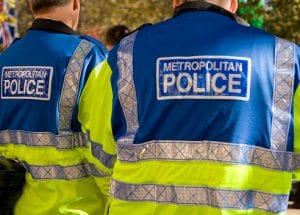 Following the recent surge knife crime which has plagued cities such as London and Manchester; the use of stop and search has once again entered the news. The recent figures give the distinct impression that the police cannot cope and are losing the war on crime in inner city areas.
Following the recent surge knife crime which has plagued cities such as London and Manchester; the use of stop and search has once again entered the news. The recent figures give the distinct impression that the police cannot cope and are losing the war on crime in inner city areas.
Many have called the current stop and search procedures into question, seeking to debate whether they are fit for the changing face of crime in 2018.
Take 30 seconds to sign up to TLP and you’ll receive free, tailored information for your aspirations and stage straight to your inbox, as well as be the first to know about new, free events – what are you waiting for? Sign-Up Now
Applying Substantive Law
In accordance with S.1 Police and Criminal Evidence Act 1984, police can conduct searches for stolen or prohibited articles so long as the offender is in a public place.
They cannot search a dwelling without following a separate set of protocols. In order to search a person or their vehicle; the officer must have reasonable suspicion that he/she is in possession of stolen goods or prohibited items such as a knife, crowbar or jemmy.
Prohibited articles under are weapons made or adapted for the commission of the following offences per S.1(8) Police and Criminal Evidence Act 1984: –
- Burglary
- Theft
- Taking a Motor Vehicle without the proper authority
- Fraud
- Offences under S.1 Criminal Damage Act 1971
- Steps Prior to Search
Interested in a career as a Criminal Lawyer? Click here to learn more>>
More On Current Procedures
Firstly, it is fundamental that procedures are followed to inform a person of why they are being searched and by whom.
S.2(2) Police and Criminal Evidence Act 1984 explains that where the search is being conducted by an officer not in uniform, there are additional safeguards in place. The officer must produce documentary evidence stating that they are a police officer, usually by means of a warrant card. In any event whether the officer is uniformed or plain clothes; they must inform the person being searched of the following:
- The officer’s name and station to which he/she is attached
- The fact that he/she is being detained for the purposes of a search
- The objective of the proposed search e.g. to look for prohibited articles
- The officer’s grounds for making the search
If applicable, the officer shall place a notice detailing the above four points in the vehicle unless they cannot do so without damaging the vehicle
Do you know the difference between a Solicitor and Barrister? Click here to find out.>>
Additional Stop and Search Powers
Aside from stolen goods and prohibited articles; the police can use stop and search powers for the following:
- Searching persons and vehicles for controlled drugs and subsequently seize and or detain anything which appears to be evidence of an offence. This power is conferred upon them by S.23(2) Misuse of Drugs Act 1971.
- Stop and search people in a radius where serious violence has taken place or a weapon is reported to have been used and it is paramount that it be found expediently. These powers come from S.87 Serious Crime Act 2007
Want to join the conversation on studying Law? Click here to see The Lawyer Portal community.>>
Identifying the Problems
Whilst the powers are in most cases easily definable in statute; the aspect that many have a problem with is exactly what constitutes a reasonable suspicion.
The police cannot use age, gender, religion, appearance, religion and race as grounds to search nor can they rely on the knowledge that a person has prior convictions.
For a different type of offence, learn about Family Law in our free guide here.>>
Where Is This All Going?
Recent surges in inner city crime in major cities call into question whether current procedures for stop and search are helpful in accurately targeting and responding to crime and where these measures might be falling short.
Are the measures in place appropriate for the changing criminal climate of 2018?
Conversations over whether issues of racial discrimination could affect how officers carry such procedures out, and how this might be tackled, are ongoing.
On a final note, it will be interesting to see how this discussion continues to develop. Will we witness any changes to current stop and search legislation, and if so, what might this mean for the future of law, ordinance and policing in major cities?
For more interesting articles, go here:
- How Is Stop And Search Preventing UK Knife Crime
- The Implications of Brexit On Family Law
- Making A Murderer- The English Legal System And Wrongful Conviction
- The Brett Kavenaugh Debacle and How It Can Be Discussed At Interviews
Author: Matthew Knights
